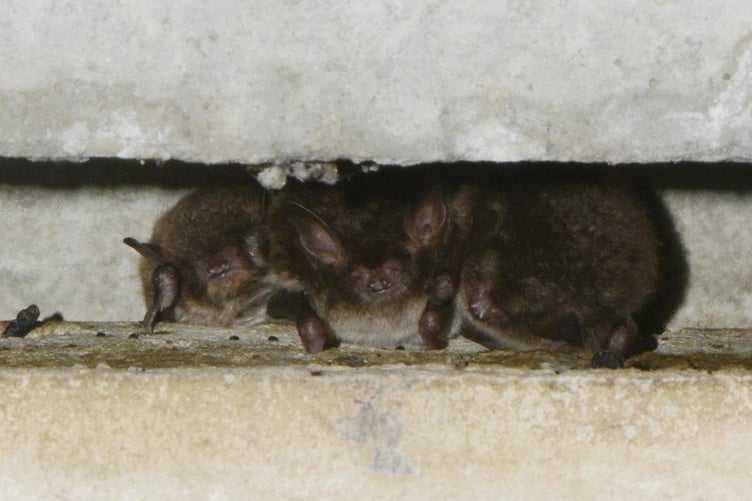Bats hibernate during the winter months (hedgehogs and bats are the only Manx mammals to do so) and start to wake up in March, emerging from the crevices in buildings or trees.
And they are very hungry!
They can eat several thousand insects in just one night.
Breeding females will already be pregnant, having mated back in the autumn and stored the sperm over winter.
They will go on to have only one ‘pup’ in late spring, unlike most small mammals that breed prolifically.
This is due to the fact that bats have relatively long life spans, and can expect to live for 30 years or more – and therefore they can have multiple offspring spread over many years.
As the weather gets warmer one of the highlights of being outdoors as dusk falls is to see, or sometimes just sense, a bat flying past.
These magical creatures can be identified by the way they fly – the common pipistrelle has an erratic flight, the brown long-eared bat has a slow and hovering flight, and Daubenton’s bat usually flies low over water.
These types of bat can all been seen on the Isle of Man. In fact, the total number of species known to live on the island has now increased to nine, with the lesser horseshoe bat being a recent addition to the list.
There are lots of bat ‘hot-spots’ around the island where the odds of spotting bats are fairly high as the sun sets.
These places include Silverdale Glen, Poulsom Park, Port Soderick, Summerhill Glen, the Onchan Wetlands, Laxey Glen Gardens and Mooragh Park.
It is illegal to handle a bat if you do not have a Bat Handling Licence.
This has been the case for many years, but concerns about zoonotic diseases (i.e. ones that can travel from an animal species to a human) are now much more heightened given the likelihood that Covid 19 started as a disease in bats.
A recent study of bat faeces, undertaken in England by Imperial College in London, discovered nine viruses linked to coronaviruses – with two being completely new to science.
Their findings show that surveillance of animal-borne viruses should be a public health priority.
However, the researchers were also keen to stress that the risk of a member of the public catching a bat virus is very low.
So, if you find an injured or grounded bat, you must call the Manx Bat Group (366177), DEFA (685844) or the ManxSPCA (851672) and we will contact the relevant agencies.
All bat species, their breeding sites and resting places are protected by law, although licences can be obtained if disturbing bats is unavoidable (e.g. when demolishing a house).
There are hefty penalties for anyone who deliberately kills or injures a bat, or destroys their resting or breeding sites.
The Manx bat population has declined over the past century due to changes in habitat, the use of pesticides and intensive farming practices and so the special protection they enjoy is needed in order to secure their existence.
The bat species found in the Isle of Man eat insects, using echo-location and their amazing flying skills to catch even the smallest of prey, and moths are often high up on the menu.
Discarded moths’ wings are usually a sign that bats are roosting above, either in a roof space or a tree.
If you want to encourage bats to live on your property then why not invest in one, or more, bat boxes?
They are readily available to buy online, or you can make your own – a bat box is very similar to a bird box, with a narrow slit at the front instead of a hole.
The Bat Conservation Trust has lots of advice on its website (www.bats.org.uk/our-work/buildings-planning-and-development/bat-boxes); and, closer to home, the Manx Bat Group is a very active charity that monitors and records bat activity on the island (see www.manxbatgrop.org).

.jpeg?width=209&height=140&crop=209:145,smart&quality=75)


-(1).jpeg?width=209&height=140&crop=209:145,smart&quality=75)
Comments
This article has no comments yet. Be the first to leave a comment.